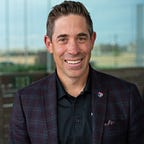Why the Best Ideas Often Sound Bad
In the time it takes you to read this short post, Amazon will have pulled in another $1 million in revenue. In fact, Amazon is currently averaging sales of almost $20 million per hour. (Are you still working from home? Don’t look now, but the Amazon truck is pulling into your driveway.)
77% of American households put up a Christmas tree every year. 82% of them have a subscription to Amazon Prime. With almost 100 million people paying $99 annually, Amazon rakes in nearly $10B in membership fees alone, just in America. But more importantly, a Prime subscription changes behavior: studies have shown (and my own household can validate) Prime membership increases purchases by almost 2.5x. It is estimated that the average Amazon Prime member spends around $1,400 per year, while non-members spend $600. Here’s my favorite part: When Prime was unveiled to the world in 2004, Wall Street hated the idea, and Amazon’s stock quickly tanked. To the geniuses on Wall Street, Prime was not only too expensive to entice consumers, it would add unnecessary cost and complexity to Amazon’s business.
Amazon Prime was invented by an engineer named Charlie Ward, who submitted the idea to a company suggestion box (seriously). At the time, Amazon offered customers free shipping on purchases of $25 or more, as long as they were willing to wait a few extra days for their order to arrive. Ward’s idea inverted that thinking: he reasoned some customers would be willing to spend more, and might even shop more often, if they could be part of a buying club that offered rapid shipping. Jeff Bezos saw the idea and said, “hmmm.” Bezos invited a bunch of Amazon colleagues over to his house and they hammered out the concept over the weekend*.
As the famed venture capitalist and author Paul Graham has noted, “history tends to get rewritten by big successes, so that in retrospect it seems obvious they were going to make it big. For that reason one of my most valuable memories is how lame Facebook sounded to me when I first heard about it. A site for college students to waste time? It seemed the perfect bad idea: a site (1) for a niche market (2) with no money (3) to do something that didn’t matter.”
Like Facebook or Amazon Prime, almost every great company or breakthrough product and service is borne from an idea that initially sounded stupid. The truth is, if a good idea is obviously good, someone else would already have done it. Hence, many good ideas just won’t appear obviously good at first blush. Now, the majority of ideas that seem bad are, in fact, bad. But as Peter Thiel has described, there is a sweet spot where the Venn Diagram overlaps — ideas that sound bad but are actually good.
One of the worst things a leader can do is to immediately judge a new idea as bad — that’s called hubris, like Steve Ballmer ridiculing the original iPhone. Far better to encourage your team — particularly junior members — to speak up, to suggest something new, to be unafraid to ask “what if?”.
Jeff Bezos could have thought like Wall Street and dismissed Charlie Ward. Instead, he knew that sometimes good ideas are initially disguised as bad ones, and they can become great with a little TLC.
*Prime wasn’t an overnight success. While the subscription service did grow steadily, it took Amazon almost 7 years to realize it could boost membership by adding new benefits to Prime. In February 2011, Amazon bundled in its Netflix-like video-streaming service, Prime Video, and eventually a plethora of other services (like Music) all “free” to Prime members. Prime subscriptions soared.
